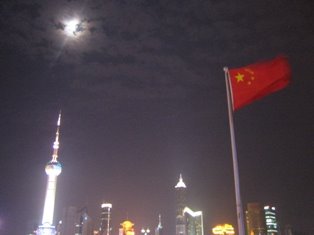International Energy Agency World Energy Outlook 2007: China and India
Linkki yhteenvetoon.
Otteita tekstistä:
- If governments around the world stick with current policies – the underlying premise of our Reference Scenario – the world’s energy needs would be well over 50% higher in 2030 than today. China and India together account for 45% of the increase in demand in this scenario.
- The challenge for all countries is to put in motion a transition to a more secure, lower-carbon energy system, without undermining economic and social development. Nowhere will this challenge be tougher, or of greater importance to the rest of the world, than in China and India.
- In a High Growth Scenario, which assumes that China’s and India’s economies grow on average 1.5 percentage points per year faster than in the Reference Scenario (though more slowly than of late), energy demand is 21% higher in 2030 in China and India combined. The global increase in energy demand amounts to 6%,
- In line with the spectacular growth of the past few years, coal sees the biggest increase in demand in absolute terms, jumping by 73% between 2005 and 2030 and pushing its share of total energy demand up from 25% to 28%. Most of the increase in coal use arises in China and India. The resurgence of coal, driven primarily by booming power-sector demand in China and India, is a marked departure from past WEOs. Higher oil and gas prices are making coal more competitive as a fuel for baseload generation. China and India, which already account for 45% of world coal use, drive over four-fifths of the increase to 2030 in the Reference Scenario. In the OECD, coal use grows only very slowly, with most of the increase coming from theUnited States.
- Developing countries, whose economies and populations are growing fastest, contribute 74% of the increase in global primary energy use in this scenario. China and India alone account for 45% of this increase.
- In the Reference Scenario, China’s primary energy demand is projected to more than double from 1 742 million toe in 2005 to 3 819 Mtoe in 2030 – an average annual rate of growth of 3.2%. China, with four times as many people, overtakes the United States to become the world’s largest energy consumer soon after 2010. In 2005, US demand was more than onethird larger. In the period to 2015, China’s demand grows by 5.1% per year, driven mainly by a continuing boom in heavy industry. In the longer term, demand slows, as the economy matures, the structure of output shifts towards less energy-intensive activities and more energy-efficient technologies are introduced.
- China’s energy resources – especially coal – are extensive, but will not meet all the growth in its energy needs.
- China is already making major efforts to address the causes and consequences of burgeoning energy use, but even stronger measures will be needed.
- Rising global energy demand poses a real and growing threat to the world’s energy security. In the Reference Scenario, China’s and India’s combined oil imports surge, from 5.4 mb/d in 2006 to 19.1 mb/d in 2030 – more than the combined imports of Japan and the United States today. Ensuring reliable and affordable supply will be a formidable challenge.
- China is by far the biggest contributor to incremental (energy related CO2) emissions, overtaking the United States as the world’s biggest emitter in 2007. India becomes the third-largest emitter by around 2015. However, China’s per-capita emissions in 2030 are only 40% of those of the United States and about two-thirds those of the OECD as a whole in the Reference Scenario. In India, they remain far lower than those of the OECD, even though they grow faster than in almost any other region.
- Clean coal technology, notably CCS, is one of the most promising routes for mitigating emissions in the longer term – especially in China, India and the United States, where coal use is growing fastest.
- The primary scarcity facing the planet is not of natural resources nor money, but time. Investment now being made in energy-supply infrastructure will lock in technology for decades, especially in power generation. The next ten years will be crucial, as the pace of expansion in energy-supply infrastructure is expected to be particularly rapid.
- China’s and India’s energy challenges are the world’s energy challenges, which call for collective responses. No major energy consumer can be confident of secure supply if supplies to others are at risk.

<< Home